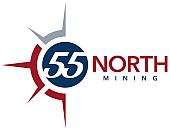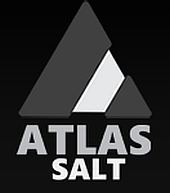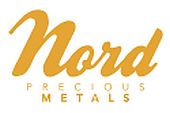 An Apprentice’s Perspective on Arizona Gold & Silver Exploration
An Apprentice’s Perspective on Arizona Gold & Silver Exploration
by Brady Stiles
Did one $150,000 drill hole just hint at $137 million in gold?
That’s the scale Arizona Gold And Silver Exploration may be tapping into at its Philadelphia project.
But how did Arizona shareholders get here — to a moment where one hole could hint at such potential? To understand that, you have to go back to 1984, when a young geologist named Greg Hahn walked into Arizona’s historic Oatman District with a not-so-simple task: identify the best gold project. Out of all the ground he studied, one property rose above the rest — the Philadelphia.
Over the following decades, Greg went on to work with other companies and projects, but he never forgot the Philadelphia deposit area. Years later, when Arizona Silver Exploration Inc. decided to branch into gold in Arizona, the Philadelphia project was the very first property Greg visited.
In 2019, he cut a deal with the owner of the unpatented claims, who happened to be the nephew of the original claim holder from decades earlier. The patented claims, however, had recently been sold to a third party. Greg got to know that individual, and over two-plus years established a relationship of confidence and trust before an agreement could be reached.
Now imagine unleashing over four decades of curiosity — backed by a management team committed to seeing it through, armed with the state-of-the-art exploration tools of today.
That was the beginning of a significant opportunity for Arizona shareholders — one that I’ve had the privilege to witness up close as a director, advisor, and shareholder.
To me, that origin story is not about romance or nostalgia. It’s about persistence, conviction, and the kind of geological intuition that only comes from experience. A man with Greg’s résumé doesn’t spend over four decades believing in a system without good reason.
Fast-forward to today, and the drill core continues to confirm what captured his attention in 1984.
As a recap to the recent press release: hole PC25-156 cut deeper into the Perry Vein, returning 9.04 g/t Au and 34 g/t Ag over 20.43 meters, and 5.61 g/t Au and 29.2 g/t Ag over 38.72 meters. Together, these intercepts underscore the system’s strength.
One of the key intercepts measured 1.19 meters in width — a narrow interval, yes, but carrying an exceptional grade: 45.6 g/t Au, which equates to about 1.37 troy ounces per ton. At $3,700 an ounce, that’s roughly $5,070 worth of gold per ton — all contained in just 12 cubic feet of rock.
Not even factoring the silver across the intercept.
And if hole 156 marks the transition into the top of the boil zone, could that 45.6 g/t intercept be the signal of something larger — a hint that higher grades and wider intercepts could become more frequent as the drill turns?
That’s not hype — it’s drill data of this caliber, a credible indication of scale.
In low-sulfidation epithermal systems like Philadelphia, intercepts of this nature suggest a transition into the boil zone — the geological equivalent of a “honey hole” — the zone where grades often spike and the true scale of a discovery comes into focus.
For over five years, I’ve had the privilege of working under the leadership of our CEO, Mike Stark. Few people in this business put in his level of effort and care. I’ve watched him set his own life aside time and again to put in the long hours it takes to move this company forward. In a sector where management can often feel distant, Mike returns calls, answers questions, and makes himself available. The difference is undeniable: Mike cares.
And he’s not alone.
Arizona’s directors and advisors bring proven experience and accomplishments, and their bios on the company’s website speak for themselves. Which raises an important question: with past performance histories like this, why would they want to be involved with a story like this? Maybe the better question is: why would management commit such significant skin in the game?
The recent press release helps answer that. Hole 156 isn’t just another data point — it’s continued confirmation of the system, refining the model with every intercept and building confidence in its scale. Here’s some quick math to translate it into shareholder value.
If you take the results from hole 156 and imagine them applied across a 60 × 60 meter drill grid — in other words, if one square of that grid averaged what hole 156 just delivered — here’s how the numbers look:
60 × 60 × 13 × 2.75 = 128,700 tonnes.
At 9 g/t, that equates to 1,158,300 grams of gold, or roughly 37,240 ounces. At a gold price of $3,700/oz, that single block — drilled for roughly $150,000 — represents a gold value of about $137 million.
As an apprentice, I don’t pretend to have all the answers — but I can see why management keeps adding to its position.
To me, this isn’t just another exploration story. This is one of those rare stories where passion, persistence, integrity, experience, geology, and management’s significant skin in the game all come into alignment.
Exploration at this level isn’t about firing off $150,000 drill holes in the ground like an Oatman gunslinger. It’s a process — a popcorn trail that requires patience, analysis, and discipline. Each assay tells a piece of the story, guiding where the next hole gets drilled — one deliberate move at a time.
The Philadelphia project sits in a mining-friendly state, with blacktop and power access, in a district that has produced millions of ounces of gold. It carries the weight of history, but it’s being explored with the state-of-the-art exploration tools of today.
Grade-times-width (grade × interval) is one of the clearest measures of a system’s strength. Hole 154 delivered a GT of 83. Hole 155 stepped it up to 99. And now hole 156 leapt to 185 — nearly double in one down-dip step-out.
That trajectory — especially with gold at an all-time high — matters. In stories like this, conviction comes from recognizing how rare the setup truly is.
When you can recognize value in a story, patience has a way of earning its reward. Without that recognition, market volatility has a way of shaking shareholders loose.
For me, conviction comes from two places: understanding the story, and my trust in leadership to deliver.
Today’s momentum builds on a deposit halted by policy, not geology.
Philadelphia thrived in the Oatman boom — until December 7, 1942, when a wartime order shut down U.S. gold mines. Pumps were cut, the shafts flooded, and unlike others that later revived, Philadelphia never reopened. Historic records show the vein carried grades between 10 and 27 g/t gold.
And now, after eight decades, the drill is cutting deeper into the deposit — well below where miners once worked. The past meets the present in a discovery entering its next chapter.
This story is, at heart, about a dream — the dream of a young geologist who first laid eyes on Philadelphia in 1984 and could never let go of what he saw.
My bet. With patience. Is on market recognition.
The system is open-ended — and the next round of drilling is about to begin.
Which leaves just one question: How big is it?
Regards,
Mike Stark, CEO, President
Arizona Gold & Silver Inc.
+1 (604) 833-4278
Suite 900 – 777 Hornby St, Vancouver, BC
Canada, V6Z-1S4
https://arizonagoldsilver.com/




























